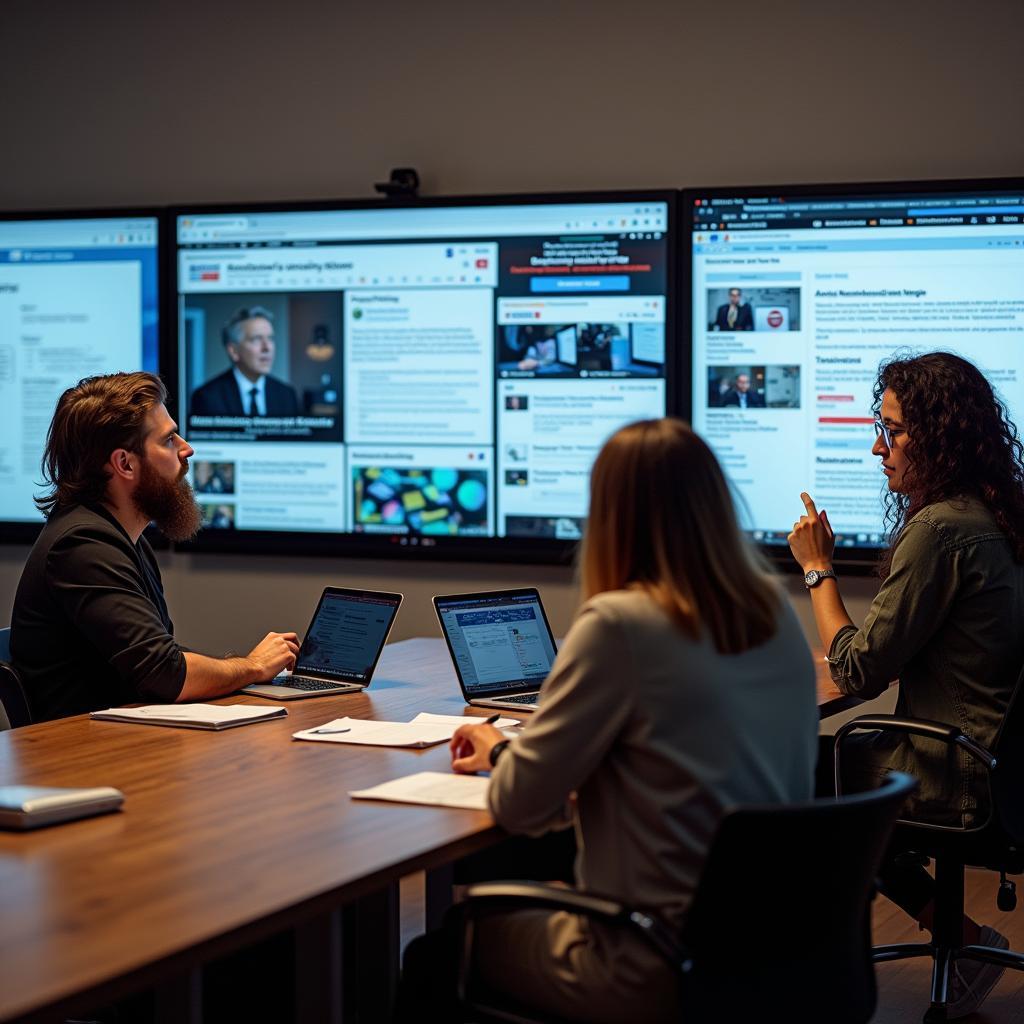Media influence on public opinion has been a recurring theme in IELTS Writing Task 2, appearing in approximately 15% of recent exam questions. Based on analysis of past papers and current trends, this topic is likely to remain significant, particularly given the evolving media landscape and how social media has changed the way news is consumed.
Table Of Contents
Sample Question Analysis
Some people believe that media (television, newspapers, and the internet) has too much influence on people’s lives and opinions. To what extent do you agree or disagree with this statement?
This question requires candidates to evaluate the impact of various media forms on society and personal opinions. It’s essential to:
- Take a clear position
- Provide specific examples
- Consider different media types
- Discuss both positive and negative influences
Band 9 Sample Essay
Similar to role of social media in shaping public opinion during elections, media’s influence on daily life has become increasingly significant. While some argue that media’s impact is excessive, I strongly agree with this viewpoint due to its profound effects on both individual and collective decision-making processes.
Media’s pervasive influence manifests in various aspects of modern life. First, news organizations significantly shape political opinions through selective coverage and editorial stances. For instance, during major elections, media outlets often present biased narratives that can sway voter preferences. Additionally, advertising across multiple platforms continuously influences consumer behavior, affecting everything from food choices to fashion preferences.
The digital age has intensified media’s impact, as explored in discussions about the role of digital media in shaping public opinion. Social media algorithms create echo chambers where users primarily encounter information that reinforces their existing beliefs. This phenomenon can lead to polarized viewpoints and reduced exposure to diverse perspectives. Furthermore, the 24/7 news cycle and constant connectivity mean that media messages persistently influence people’s thoughts and behaviors.
However, this extensive influence isn’t entirely negative. Media plays a crucial role in raising awareness about important issues, from environmental concerns to social justice matters. Moreover, it facilitates global communication and cultural exchange, similar to The role of cultural literacy in global interactions. The key lies in developing media literacy and critical thinking skills to navigate this information-rich environment effectively.
In conclusion, while media’s influence on opinions and daily life is indeed substantial, this reflects the reality of our interconnected world. The solution isn’t to reduce media influence but to enhance people’s ability to consume information critically and consciously.
 Critical media consumption and digital literacy education concept
Critical media consumption and digital literacy education concept
Band 6.5 Sample Essay
I agree that media has too much influence on people’s lives and opinions today. This essay will discuss why this is true and what effects it has.
Firstly, media affects how people think about many things. News programs and websites tell people what to think about politics and society. For example, if TV shows say something is bad, many people will believe it without checking facts. Also, advertising makes people want to buy things they don’t need.
Furthermore, social media takes too much time in people’s lives. Many people spend hours every day looking at their phones and computers. This means they have less time for real activities and face-to-face relationships. It can also make people feel bad about their lives when they compare themselves to others online.
However, media also has some good points. It helps people learn about what happens in the world and stay connected with friends. It can also help spread important information quickly during emergencies.
In conclusion, while media has some benefits, I think it has too much control over people’s thoughts and time. People should try to limit their media use and think more independently.
Scoring Analysis
Band 9 Essay Features:
- Sophisticated vocabulary and complex structures
- Clear argument development
- Relevant examples and thorough analysis
- Cohesive paragraphing
- Advanced transitional phrases
Band 6.5 Essay Features:
- Basic but clear argument
- Simple examples
- Some repetition
- Limited vocabulary range
- Basic sentence structures
Key Vocabulary
- pervasive (adj) /pəˈveɪsɪv/ – spreading widely throughout an area or group
- polarized (adj) /ˈpoʊləraɪzd/ – divided into opposing groups
- echo chamber (n) /ˈekəʊ ˌtʃeɪmbə/ – situation where people only encounter opinions that match their own
- manifest (v) /ˈmænɪfest/ – to show something clearly
- narrative (n) /ˈnærətɪv/ – a particular way of explaining or understanding events
Consider practicing with these related topics:
- The impact of social media on young people
- Traditional media vs digital media
- Media regulation and freedom of speech
Share your practice essays in the comments for feedback and discussion.


